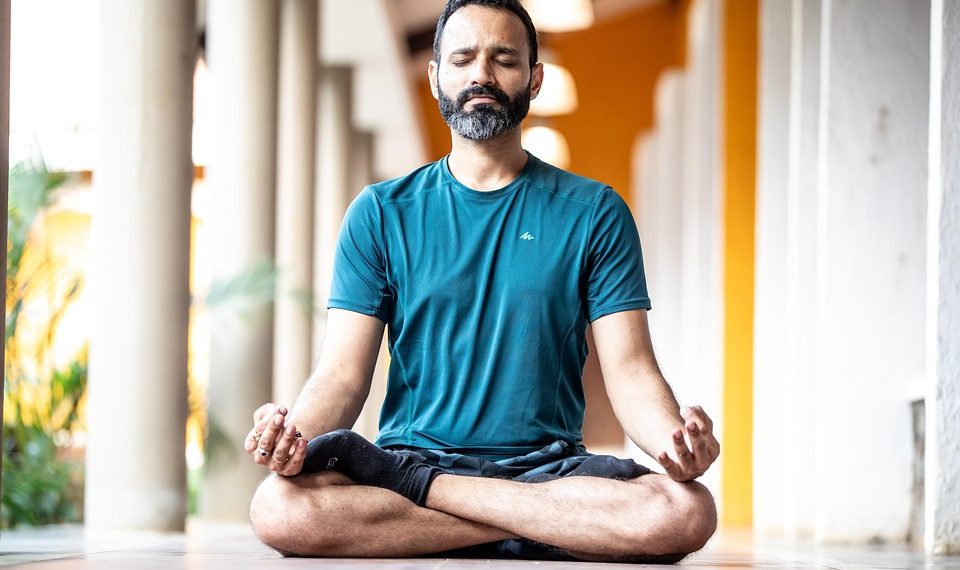Yoga poses can transform your daily wellness routine into a sanctuary for your body and mind. They’re not just stretches; they’re pathways to emotional balance, physical strength, and mental clarity. If you’re seeking a holistic approach to feeling better, you’ve come to the right place.
Contents
- Why Yoga Matters
- 1. Mountain Pose (Tadasana)
- 2. Downward-Facing Dog (Adho Mukha Svanasana)
- 3. Warrior II (Virabhadrasana II)
- 4. Tree Pose (Vrksasana)
- 5. Child’s Pose (Balasana)
- 6. Seated Forward Bend (Paschimottanasana)
- 7. Corpse Pose (Savasana)
- Incorporating Yoga into Your Daily Routine
- The Transformative Power of Yoga
- Bottom Line
- FAQ
Why Yoga Matters
In our bustling lives, we often prioritize productivity over our well-being. But here’s the truth: when you invest a little time in nurturing yourself, everything else falls into place. Yoga isn’t just a practice; it’s a lifestyle that empowers you to connect with your inner self. It cultivates resilience, reduces stress, and enhances your overall quality of life. Let’s explore seven transformative poses that you can easily integrate into your daily routine.
1. Mountain Pose (Tadasana)
Why It’s Important: Mountain Pose might seem simple, but don’t underestimate its power. This foundational pose helps improve posture and instills a sense of grounding.
How to Do It:
- Stand tall with your feet together.
- Distribute your weight evenly on both feet.
- Engage your thighs, lift your chest, and relax your shoulders.
- Reach your arms overhead with palms facing each other.
Benefits:
- Enhances focus and concentration.
- Strengthens your legs and core.
- Promotes a sense of calm.
2. Downward-Facing Dog (Adho Mukha Svanasana)
Why It’s Important: This pose is like a reset button for your body. It stretches and strengthens simultaneously, making it a favorite among yogis.
How to Do It:
- Start on all fours, with your hands shoulder-width apart.
- Tuck your toes and lift your hips up and back.
- Keep your spine straight and your heels reaching toward the ground.
Benefits:
- Relieves tension in the spine and neck.
- Stimulates blood flow to the brain.
- Builds strength in the arms and legs.
3. Warrior II (Virabhadrasana II)
Why It’s Important: Warrior II is not just about strength; it’s about embracing your inner warrior. This pose boosts confidence and encourages a strong heart.
How to Do It:
- Stand with your feet wide apart.
- Turn your right foot out 90 degrees and bend your right knee.
- Extend your arms to the side, gaze over your right fingertips.
Benefits:
- Increases stamina and endurance.
- Opens the hips and chest.
- Cultivates a sense of empowerment.
4. Tree Pose (Vrksasana)
Why It’s Important: Tree Pose invites you to find your balance—physically and emotionally. It teaches stability and focus.
How to Do It:
- Stand tall and shift your weight onto your left foot.
- Place your right foot on the inner thigh or calf (avoid the knee).
- Bring your hands to your heart or overhead.
Benefits:
- Strengthens your legs and core.
- Improves concentration.
- Enhances your sense of grounding.
5. Child’s Pose (Balasana)
Why It’s Important: Sometimes, you just need to pause. Child’s Pose is your safe haven, allowing you to reconnect with your breath and calm your mind.
How to Do It:
- Kneel on the mat and sit back on your heels.
- Fold forward, resting your forehead on the ground.
- Extend your arms in front or let them rest by your sides.
Benefits:
- Relieves tension in the back and shoulders.
- Promotes relaxation and stress relief.
- Encourages introspection.
6. Seated Forward Bend (Paschimottanasana)
Why It’s Important: This pose is a gentle reminder to slow down and listen to your body. It stretches the spine and hamstrings while soothing the nervous system.
How to Do It:
- Sit with your legs extended in front of you.
- Inhale and lengthen your spine; exhale as you fold forward.
- Reach for your feet or shins, keeping your back straight.
Benefits:
- Calms the mind and relieves stress.
- Improves flexibility in the hamstrings and spine.
- Stimulates digestion.
7. Corpse Pose (Savasana)
Why It’s Important: Often overlooked, Corpse Pose is the ultimate relaxation pose. It’s where the magic happens—where your body integrates the benefits of your practice.
How to Do It:
- Lie flat on your back with your legs slightly apart.
- Allow your arms to rest at your sides, palms facing upward.
- Close your eyes and focus on your breath.
Benefits:
- Reduces anxiety and stress.
- Promotes deep relaxation.
- Enhances your overall sense of well-being.
Incorporating Yoga into Your Daily Routine
Now that you know these poses, how can you seamlessly weave them into your daily life? Here are some practical tips:
- Start Small: Even five minutes a day can make a difference. Choose a couple of poses and practice them consistently.
- Set a Time: Schedule yoga into your day just like any other appointment. Morning or evening, find what works best for you.
- Listen to Your Body: Your practice should feel good. If something doesn’t, modify it or skip it altogether.
- Create a Space: Designate a comfortable spot in your home for your practice. It doesn’t need to be large; just a peaceful corner will do.
- Use Resources: Apps, online classes, or local studios can provide guidance. Consider exploring Yoga Journal or DoYogaWithMe for inspiration.
The Transformative Power of Yoga
Yoga isn’t just a workout; it’s a journey of self-discovery. The poses you practice today can ripple through your life, enhancing your physical health and emotional well-being. Whether you’re looking to boost your energy, relieve stress, or deepen your connection with yourself, these seven yoga poses are your allies.
Bottom Line
Integrating yoga into your daily wellness routine can be life-changing. Start with these seven poses, and watch how they enhance your body, mind, and spirit. You deserve to feel your best every day. So roll out your mat and begin your journey toward greater well-being.
FAQ
How often should I practice yoga?
Aim for at least two to three times a week, but feel free to practice daily if you can.
Do I need to be flexible to start yoga?
Not at all! Yoga is for everyone, regardless of your current flexibility. The more you practice, the more flexible you’ll become.
Can I practice yoga at home?
Absolutely! Home practice can be very rewarding. Just create a calming space and follow online classes or videos.
Take that first step today. Your body and mind will thank you.
Get Your FREE Natural Health Guide!
Subscribe now and receive our exclusive ebook packed with natural health tips, practical wellness advice, and easy lifestyle changes — delivered straight to your inbox.














